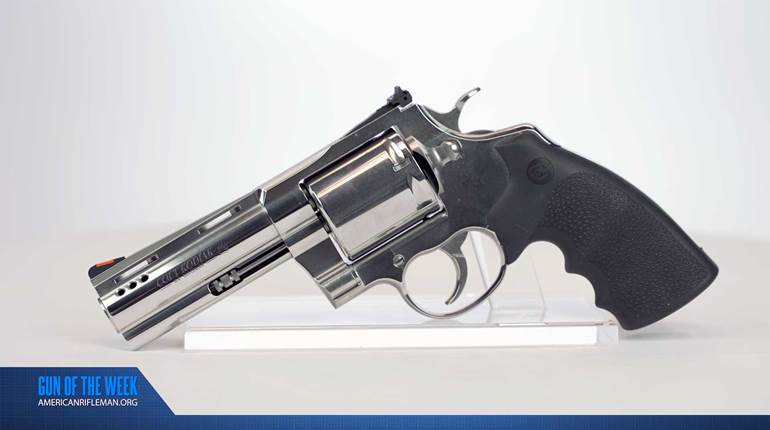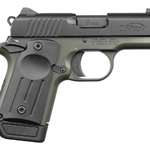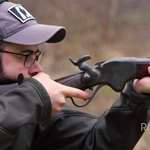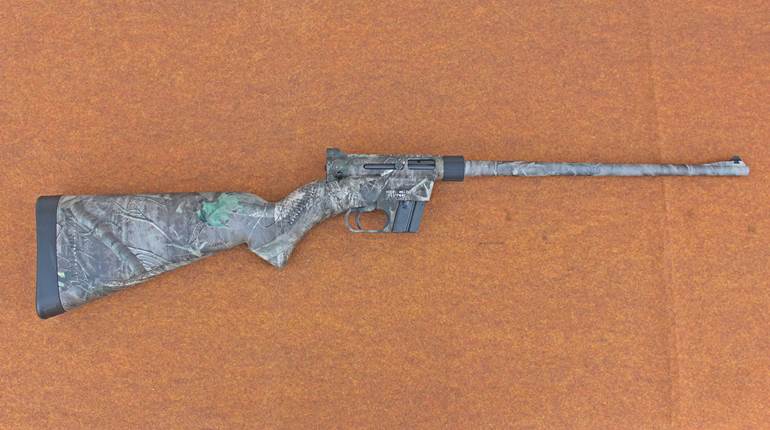In the latter portion of the 19th century, militaries across the world made the shift to the self-contained metallic cartridge, and that went for sidearms as well as rifles. When the British made the change, its military adopted the government-produced Enfield Mark I and Mark II revolvers. Watch our "American Rifleman Television" I Have This Old Gun segment above to see how these worked and why they weren't all that successful.
"In the mid-19th century, British officers were required to privately purchase their sidearms, which meant that you saw a pretty wide variety of different arms being employed in the military, particularly in Indian service at the time," American Rifleman Executive Editor Evan Brune said. "But there were standardized arms."

Beginning in 1879, the British military adopted the Enfield revolver, introduced first in a short-lived Mark I variant, quickly superseded by the Enfield Mark II chambered for the .476 Enfield cartridge that was similar to .455 Webley.
"The British Enfields, the Mark I and Mark II, are an interesting chapter in English history," NRA National Firearms Museum Director Phil Schreier said." Here we have the English kind of arriving late to the game with self-contained metallic cartridges. And they've got Colt and Smith & Wesson as leaders in the field to look up to, take notice of what they've already developed in the 1870s and how to improve on that. And yet they don't really follow any of the lessons learned."

Aside from being clunky, awkward-handling revolvers, the Enfield Mk II suffered from several issues. The blackpowder .476 cartridge was anemic for its time, lacking significant stopping power. Additionally, the gun used a right-side loading gate that made it slow to load. Then there were the issues with the gun's top-break ejection system.
"The Enfield revolvers were innovative for the time in that they used what was called the 'Owen-Jones selective ejection system.' And the whole idea of the Owen-Jones was when you broke open the gun, you could eject the spent cartridges and retain any unfired rounds in the cylinder so that you could keep those rounds in action and only reload the rounds that you had fired," Brune said. "It is an interesting idea, but in practice, this ended up being horrifically ineffective at times."

The concept behind the Owen-Jones system was that it only allowed the revolver to break apart far enough to release spent cartridge cases, while loaded rounds would be retained by the nose of the bullet still poking into the rear of the cylinder chambers. However, because of the limited space between the rear of the cylinder and the recoil shield, spent cases often became jammed, rendering the gun useless.
"The gun had a fairly limited service life. It starts being made about 1880, and then the Webley Mk I is adopted in 1887," NRA Publications Editorial Director Mark Keefe said. "But that doesn't mean the career for this gun is over, because at that time, England had a huge empire. So these guns, as they were withdrawn from front line service with British troops, would go on to serve in the colonies. Their most notable use, frankly even more famous than that of the British army, was they were used by the Mounties, the Canadian Northwest Mounted Police."
To watch complete segments of past episodes of American Rifleman TV, go to americanrifleman.org/artv. For all-new episodes of ARTV, tune in Wednesday nights to Outdoor Channel 8:30 p.m. and 11:30 p.m. EST.























